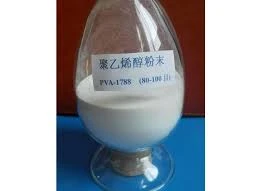The Impact and Applications of HPMC 150000 CPS in Modern Industries
Hydroxypropyl Methylcellulose (HPMC), particularly the HPMC 150000 CPS variant, has emerged as a crucial polymer in various industrial applications due to its unique properties. This cellulose derivative is widely recognized for its rheological characteristics, film-forming ability, and versatility, making it invaluable in sectors such as pharmaceuticals, food, cosmetics, and construction.
Properties of HPMC 150000 CPS
HPMC 150000 CPS indicates a specific viscosity level, with CPS denoting centipoise, a unit of measurement for viscosity. At a concentration of 2% in water, HPMC 150000 CPS produces a highly viscous solution, making it an excellent thickening and stabilizing agent. The polymer is non-ionic and does not interact with cations, which means it remains stable in a variety of pH environments, thus maintaining its functionality across a diverse range of applications.
Another notable property of HPMC is its solubility in hot water, which allows for easy incorporation into various formulations. It is also biodegradable, making it an environmentally friendly option compared to synthetic polymers. These characteristics position HPMC 150000 CPS as a preferred choice in formulations requiring a blend of viscosity control and stability.
Applications in Pharmaceuticals
In the pharmaceutical industry, HPMC 150000 CPS plays a pivotal role in the formulation of various drug delivery systems. It is frequently used as a binder in tablets, aiding in the compression process while ensuring uniform distribution of active ingredients. Moreover, HPMC's ability to form gel-like structures is leveraged in controlled-release drug formulations. This property allows for the gradual release of medication over time, improving therapeutic efficacy and patient compliance.
Additionally, HPMC is employed in the production of capsules and as an excipient in various liquid formulations. Its compatibility with a wide range of active pharmaceutical ingredients (APIs) enhances its utility in complex formulations, ensuring stability and bioavailability.
Role in the Food Industry
In the food sector, HPMC 150000 CPS is utilized as a food additive to enhance texture, thickness, and stability of food products. It serves as a fat replacer in low-fat formulations, helping maintain mouthfeel and viscosity without adding calories. Its emulsifying properties make it ideal for stabilizing oil-water mixtures in sauces, dressings, and dairy products.
hpmc 150000 cps

Furthermore, the polymer's ability to form gels contributes to its use in gluten-free and low-carb products, providing structure and improving sensory attributes. As consumers increasingly seek clean-label products, the use of natural and plant-derived ingredients like HPMC aligns with market trends favoring healthier and additive-free food options.
Contributions to Cosmetics
HPMC also finds significant applications in the cosmetic industry. Its thickening and stabilizing properties are crucial for creating smooth, homogenous formulations in various products such as lotions, creams, and gels. The polymer contributes to the desired viscosity and texture, improving user experience during application.
Additionally, HPMC is utilized in hair care products as a film-forming agent that provides hold and shine. Its non-ionic nature ensures compatibility with a wide range of cosmetic formulations, making it a versatile ingredient in product development.
Importance in Construction
In the construction industry, HPMC 150000 CPS is used as an additive in cement-based products like tile adhesives, mortars, and plasters. Its water-retention properties are vital in preventing the premature drying of mixtures, allowing for better open time and workability. This leads to stronger bonding and improved performance of construction materials.
The use of HPMC enhances the performance and durability of construction materials, making it a crucial component in modern building practices. As the industry continues to innovate, HPMC's role is expected to expand, particularly in the context of sustainability and the development of eco-friendly building materials.
Conclusion
The versatility and unique properties of HPMC 150000 CPS have solidified its place in various industries. From pharmaceuticals to food, cosmetics, and construction, HPMC has proven to be an essential ingredient that contributes to product performance and quality. As industries continue to evolve, the demand for innovative and sustainable solutions will likely drive further research and development surrounding the applications of HPMC and its derivatives, ensuring its relevance in the future.






